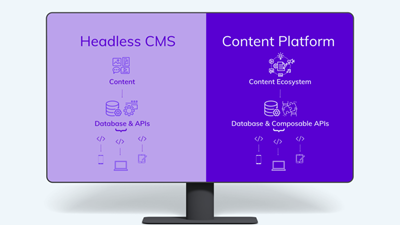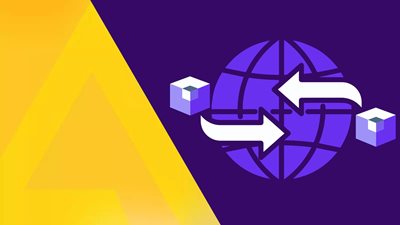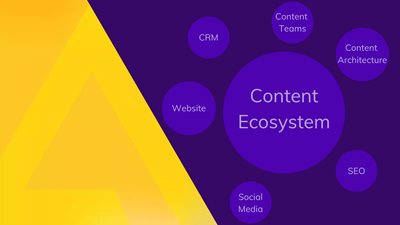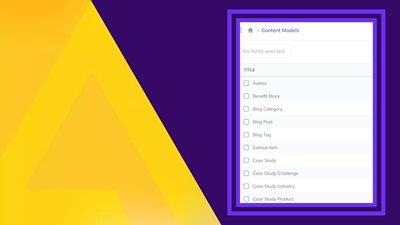Headless CMS vs Content Platforms


Content platforms, are an elevated iteration of headless CMS, designed to facilitate composability, which has been proven to be disruptive to the CMS industry. This transformation is primarily attributed to their API-first and composable architecture, as exemplified by the growth and success of platforms like Agility.
Headless CMSs and content platforms are born out of the same premise: allow businesses to create and deliver omnichannel digital experiences using the best tech stack for the job. Or in other words, build a composable net of interconnected microservices.
While they both enable composability through their use of APIs, the Headless CMS market lack the API-first architecture companies need to scale and are generally designed for smaller projects.
What is a headless CMS?
A headless CMS is a content management system that decouples the backend content repository and management system, also known as the "body," from the presentation layer or front-end, referred to as the "head."
Headless architecture allows for a content-first approach with APIs to access content from the backend and display it to any channel using any front-end. In this model, APIs serve as the bridge between the head and the body, which means you can change one or the other to build things your way.
The headless CMS model is also known as "Content-as-a-Service" (CaaS) as a headless platform doesn’t generate any front-end code; it just serves as a repository that stores and handles your data in a format that’s easy for your frontend to read, usually JSON or HTML.
This simplified data exchange enables front-end developers to continue developing new functionality for any channel independent of the core/backend CMS, resulting in more performant digital experiences.
There are several benefits to using a headless CMS. One major advantage is the ability to separate the content management and delivery layers, which can improve security and scalability.
This means the CMS can focus on managing content while other systems or applications display that content to users. Headless CMSs also offer a high degree of flexibility, as developers can use them with various front-end technologies and platforms.
What is a content platform?
A content platform is a comprehensive system for managing and delivering digital content that utilizes cutting-edge technology to provide high-speed and personalized experiences. It separates content creation and storage from the presentation layer, displaying it on multiple channels such as websites, mobile apps, and social media. Content platforms offer end-to-end workflows to streamline collaboration and improve efficiency.
In addition to storing and organizing content, content platforms provide tools for creating, publishing, promoting, and analyzing content, and they are better equipped to handle complex content types. Agility, for example, allows companies to create content tailored to specific user segments for more relevant and engaging experiences.
Read more: What Are Content Platforms?
So, when should you use a headless CMS, and when should you use a content platform?

Similarities between headless CMS and content platforms
Both can be coded your way
Both headless CMSs and content platforms are popular among developers. Agility provides a wide range of tools to choose from, allowing you to select the ideal tools for your technology stack. Additionally, both platforms offer pre-built integrations that streamline the process of building your digital experience.
For content editors, Agility offers user-friendly tools and page management features that simplify the process of working with content pages. These features are designed to eliminate frustration and ensure a seamless content editing experience.
Both are superior choices to monolithic solutions
A monolithic solution is like an old, outdated PC. It provides everything an organization might need (and also not need) in one package, but it can be cumbersome for developers and marketers, like using a floppy disk drive. A legacy CMS is like the central piece of a monolithic DXP and is like a grand piano in a concert hall, but the tools they integrate with the CMS are like old instruments that have been collecting dust in the basement. It may work but can hinder organizations in the long run.
Both platforms provide lightning-fast speed
With both platforms, developers can create epic digital experiences with the snap of a finger and minimal effort.
Agility's library, for instance, is filled with ready-to-use SDKs and starters that will help you instantly deploy new content on websites, apps, wearables, and even the next big thing we have yet to learn about. Deploy new content quickly across websites, apps, wearables, and more with well-defined APIs. In addition, developers can reuse content and code across sites, devices, and even different dimensions without duplicating work.

Differences between headless CMS and content platforms
Content platforms guarantee composability
A content platform is like the peanut butter to the jelly of your digital experience sandwich. Without it, you're just slapping a bunch of random services together and crossing your fingers that they'll work together like a well-oiled machine. But with a content platform, it's like having a conductor for your symphony of services.
A headless CMS also guarantees a certain degree of composability but doesn’t orchestrate the services. Again, following our orchestra example, it’s as if you had an orchestra with very skilled players that are all playing their sheet music without seeing what the others are doing and expecting them to do it well so the symphony sounds right.
Content platforms work as an API mesh
An API mesh is like the ultimate party planner. It ensures all the different services are mingling and having a great time together so your users can have a personalized, dynamic, and unforgettable experience. It's like having a bouncer at the door, letting in all the cool new services and third-party systems, so you can add all the new and exciting features you want.
On the other hand, a headless CMS is like the ultimate wingman; it helps you connect all your different third-party services and ensure they're all getting along. It's like a master chef, it mixes and blends all the other services like search, authentication, analytics, forms, chatbots, personalization, and payment gateways to create the perfect digital experience, but the ingredients don’t mingle with one another.
When Should You Choose One or the Other?
It really depends on your needs and goals. For example, if you are a developer looking for a flexible way to manage and deliver content, a headless CMS may be the right choice for you. Still, a content platform is the right call if you need a full-fledged platform that will interact with many different stakeholders and types of users and have specific technology needs.
But if that’s not enough, here’s a summary of when to choose one or the other:
Use a headless CMS when…
- You need a complex and dynamic front-end: A headless CMS allows developers to work independently on the front-end and back-end, making creating a highly customized and interactive user experience easy.
- You want compatibility with multiple devices and platforms: A headless CMS decouples the front-end and back-end, making it easy to create responsive and adaptive designs that work well on different devices and platforms.
- You require integrations with other systems or APIs: A headless CMS provides a flexible and easy-to-use API that developers can use to connect the website to other systems or services, such as e-commerce platforms, CRM systems, or marketing automation tools.
- You want a highly scalable and performant system: A headless CMS allows developers to optimize the website's performance by only delivering the content needed for a specific request, rather than loading the entire page.
Use a content platform when…
You want all of the above, and you need:
- Easier Integration Across Systems: A content platform simplifies integrating different software products across your organization’s various departments. This means that data is more easily shared between teams, making it easier to access the information you need when you need it.
- Improved User Experience: A content platform also makes creating an intuitive user experience for customers easier. With one, you can create an interface that is visually appealing and easy to use, resulting in a better overall experience for your customers. Additionally, machine learning and artificial intelligence can help personalize the user experience by providing tailored recommendations based on each customer's needs and preferences.
- Greater Automation Capabilities: A content platform offers greater automation capabilities than a headless CMS, allowing organizations to automate tedious tasks and processes that would otherwise require manual labour or oversight from multiple departments or teams. This helps save time and money while ensuring tasks are completed accurately and efficiently.
- Increased Efficiency Across Teams: The increased efficiency offered by a content platform helps reduce costs and improve communication between different teams within the organization. By streamlining processes across departments and providing employees with timely information, teams can become more productive while reducing the amount of time spent on mundane tasks or redundant processes.
- Access to Advanced Analytics Tools: Finally, content platforms offer advanced analytics tools that allow organizations to track customer behaviour in real-time and gain insights into how their customers use their products or services. This helps organizations make informed decisions regarding their marketing strategies and better understand their target audience so they can tailor future campaigns accordingly.
Closing thoughts
Going headless is always a good idea. Its ability to integrate with existing systems allows organizations to create an integrated network of internal and external applications, enable faster response times, increase scalability, and a more create a more efficient workflow, making choosing a headless CMS or a content platform a solid business idea.
However, if you want something that’s a headless CMS and more, you should pick a content platform like Agility.
With robust user-management features and advanced content editing tools, Agility can ensure that all users have access to the right content when they need it.
Agility also allows organizations to quickly deploy updates while keeping their data secure, making them invaluable tools in today's business environment.
For all these reasons, a content platform can be essential if you’re looking to enlist a future-proof tool that will help you centralize and orchestrate every player of your orchestra of services.




